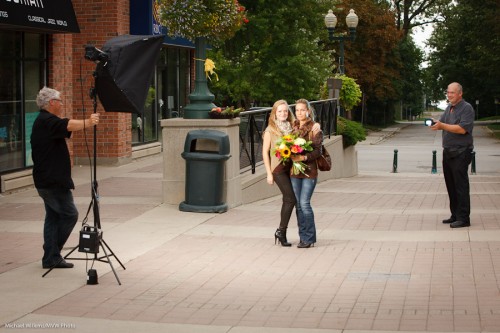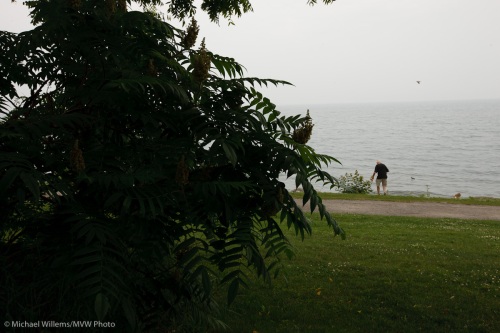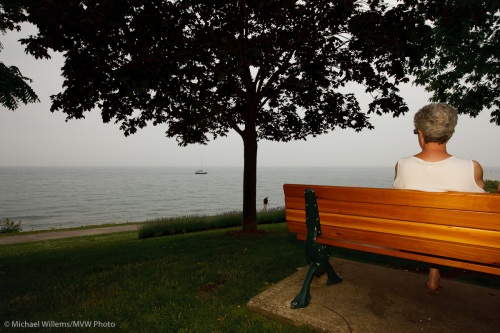So from my posts, you have seen that in using flash outdoors, the big challenge is:
To make the background darker without also affecting the flash power to the point that it is no longer sufficient.
To make an outdoors background darker, other than actually making it darker (sometimes the simplest option is the obvious one: wait for a solar eclipse, shoot later in the day, or use scrims), you can do four things:
- Use ND filters
- Decrease aperture (use a higher “F-number”)
- Decrease ISO
- Increase the shutter speed
Unfortunately, the first three of those also affect the flash: every use of those will negatively affect your flashes’ available range too. So you want to avoid them if possible.
And what about the shutter speed?
That does not affect your flash range. So it is the obvious one to use to make the background darker. But… only up to your camera’s synch speed (depending on your camera, this is normally around 1/250th sec). Beyond that, you cannot use flash.
“Yes you can, Michael, you can use Hi-Speed (Auto FP) flash”, I hear you say. That is true – but that too negatively affects your flash range. Catch-22! So no, it does not help with your flash power. (Then why do we have it? Ah.. to allow outdoors shots with the blurry backgrounds that only large apertures will give you.. apertures that need fast shutter speeds!)
So. Again, as said yesterday, a nicely balanced outdoors flash picture (i.e one in which the background is darker), needs you to first of all use method 4 above, up to your flash sync speed.
After that, you must do one or more of of the folowing to still have enough flash power:
- Bring the flash closer.
- Forego the use of modifiers and use direct flash.
- Add more flashes.
- Use more powerful flashes (strobes instead of speedlights).
- Zoom in your flashes to concentrate the light (giving you more intensity over a smaller area).
Work though the logic of this post very carefully. Step by step – the logic is important, and it is important that you thoroughly understand it. This is not esoteric theory: this directs you in every day shooting, every single day!







